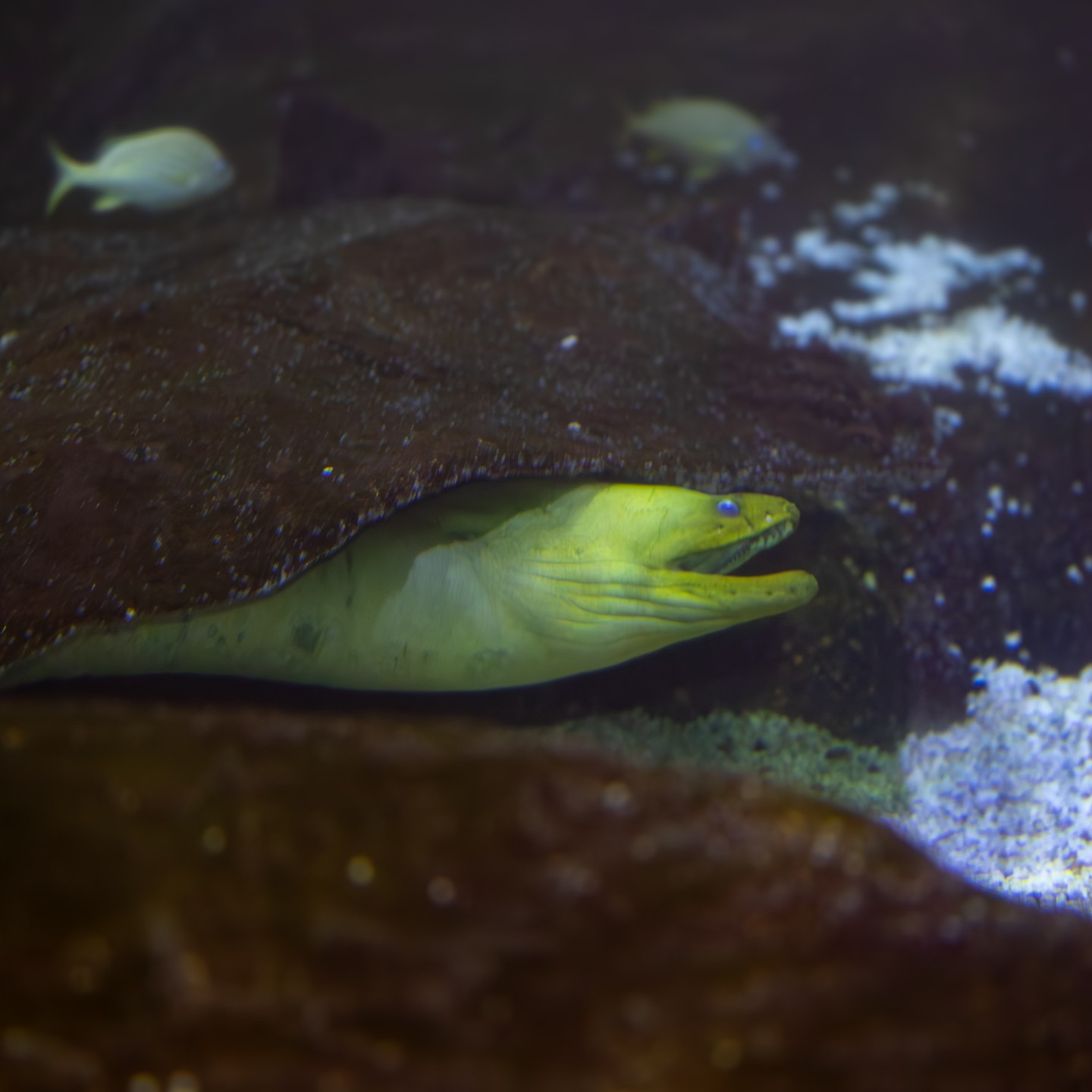- Overview of the green moray eel, emphasizing their natural habitat and behavior.
- Introduction to Pickles, the green moray eel at the Norfolk Canyon exhibit.
- Examination of green moray eel’s physical characteristics and adaptations.
- Discussion on the challenges and methods of zookeeping and exhibit design for moray eels.
- Insight into the conservation status and efforts surrounding green moray eels.
Green moray eels are fascinating creatures that dwell in the marine ecosystems of the Atlantic Ocean, particularly along the coastal regions. Known for their olive-green hue and serpentine movements, these eels play a crucial role in maintaining the ecological balance of coral reefs and rocky seabeds. Their habitats extend over a wide range, including the warm waters of the Caribbean and the shallow coastal regions of the United States. Moray eels, such as the green moray, prefer to spend their daylight hours nestled within the crevices of rocks or amid the protective arms of coral reefs. This behavior aids in their survival, allowing them to hide from predators and ambush unsuspecting prey. As nocturnal hunters, they emerge at night to feed, often on fish, crustaceans, and octopuses.
For visitors to Norfolk’s Canyon exhibit, spotting Pickles the green moray eel requires patience and keen observation. Pickles exemplifies the typical behavior of moray eels, often retreating into the shadowy, secure spaces provided by his habitat. Despite his inclination to remain unseen, Pickles’ emerging moments are captivating. As a green moray eel, Pickles is among the larger individuals, capable of reaching impressive lengths of up to eight feet. The allure of spotting Pickles lies not only in his size but in his graceful movement within the exhibit’s expertly crafted environment.
Green moray eels possess several adaptations that make them formidable residents of the ocean. Their elongated, flexible bodies allow them to maneuver through tight spaces, a necessity for hunting and evasion. Their skin secretes a protective mucus that not only adds to their green appearance but also offers a layer of defense against parasites and abrasion. Unlike fish that rely on conventional gills for respiration, moray eels have specialized openings that facilitate water movement, enabling them to breathe even when largely stationary. Their sharp teeth and powerful jaws equip them for capturing swift prey.
Designing an exhibit for a creature like Pickles demands thoughtful planning and understanding of eel behavior. The Norfolk Canyon exhibit provides a sanctuary that mimics the eel’s natural environment, ensuring both their wellbeing and the educational experience of visitors. Curators must create spaces that replicate the complex structures of coral reefs and rocky layers of the sea floor. Additionally, understanding the nocturnal habits of these eels informs feeding schedules and lighting designs within the exhibit, allowing natural behaviors to be observed while maintaining the health of the specimen.
Moray eels, including the green moray, face various threats in the wild, including habitat destruction and pollution. Despite being classified as of least concern on the IUCN Red List, ongoing conservation efforts are critical. Reef restoration projects and protection of marine environments support the preservation of these and other marine species. Educational exhibits like the one housing Pickles serve a dual purpose by fostering public interest and awareness about marine conservation while inspiring future stewards of the ocean. Engagements like these further the dialogue on sustainable practices and the importance of preserving biodiversity in our oceans.
Through appreciating the enigmatic beauty and biological wonders of green moray eels, both in exhibits and their natural habitats, we gain insight into the intricate tapestry of marine life. The opportunity to observe Pickles within the Norfolk Canyon exhibit offers a tangible connection to the majestic life forms that inhabit our seas, underscoring the significance of continued efforts in wildlife conservation and education.
*****
Source Description
For a fella so bright, it can take a bit of time to spot Pickles in our Norfolk Canyon exhibit. Like other moray eels, green moray eels are nocturnal and prefer solitary lives tucked away in rock crevices or the nooks of coral reefs during the day. However, when Pickles does emerge to move locations or grab a meal from his keepers, there’s quite a lot to see. These eels can average between five and six feet in length, with some individuals reaching up to eight feet long!
Photo: Pickles the green moray eel tucked under a rock outcropping in his exhibit.


